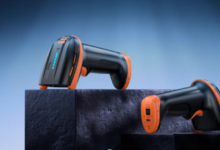Fitness Cleaning: Combine Exercise and Cleaning for a Healthier You

It can be challenging to balance a busy life with work, family, and personal well-being. Often, fitness is the first thing to be sacrificed. But what if you could combine exercise with household chores? You can burn extra calories while cleaning your house.
The Benefits of Fitness Cleaning
Fitness cleaning is simply incorporating exercise into your cleaning routine. Doing this provides several benefits:
- Improved fitness: Short bursts of exercise can improve your overall fitness.
- Increased calorie burn: Working at a brisk pace while cleaning helps burn calories.
- Time-saving: Combining two tasks into one saves time and energy.
- Motivation: Makes cleaning more enjoyable by adding a fun, healthy element.
How Housework Counts as Exercise
It might be tempting to think that the only way to get in shape is to walk endlessly on a treadmill or pick up heavy things at the gym, you can actually turn your daily chores into healthy exercise!
In reality, some of the most important health benefits can be found around your home. We are big proponents of functional exercise, which enhances and improves daily function.
Housework is Functional Exercise
Non-injured, healthy adults are capable of various essential movements, and many of them can be found in simple daily tasks that you might find yourself doing around the house on a Saturday afternoon.
Lifting and carrying items, washing the car, or standing to dust that high shelf are all functional movements. While they may not seem like much, these movements can both burn calories and utilize muscles that would go unused if you decided to skip your chores to lay on the couch.
Furthermore, many tasks might get you into positions that need to be trained to remain fully healthy and functional. For example:
- Gardening typically requires getting on the ground, either kneeling, sitting, or squatting, which is a position that tends to get harder for many older people if they are avoided.
- Tasks like mopping or vacuuming require that your body moves in a transverse (or twisting) motion, that you may not otherwise use, building core strength.
- Mowing the lawn requires you to move dynamically to steer, rotate, and push against resistance. This encourages your body to work harder, builds a sweat, and increases calorie burn.
See also: AI Face Swap Technology in Celebrity Endorsement Campaigns
Examples of Fitness Cleaning Exercises
Here are some ways to combine exercise with your cleaning tasks:
- Lunges while vacuuming: Lunge forward while vacuuming to work your hips, thighs, and buttocks. Keep your back straight, bend your knees at 90 degrees, and alternate legs.
- Laundry squats and lifts: When carrying the laundry basket, keep your arms raised at a 90° angle to tone your arms. Work your legs with squats and lunges as you fold laundry. Hold a squat while sorting the laundry.
- Arm workouts while cleaning: Work your shoulders and arms while washing windows, showers, scrubbing floors, and mopping floors. Dust furniture in a circular motion, using a little more force to increase calorie burning. For a more intense workout, scrub your floors instead of mopping.
- Worktop press-ups/knee ups: While waiting for the kettle to boil, do standing press-ups by leaning on the edge of your countertop. Try some knee ups by using the corner of the worktop if you have time.
- Raking Leaves
- EMOM (“Every Minute On Minute”)
- Raking is a great upper body and core workout, you can add to it by setting a timer to go off every minute and perform an exercise when it goes off.
- 1 Minute Rake
- Lunges for 1 Minute
- 1 Minute Rake
- Squats for 1 Minute
- 1 Minute Rake
- Push Ups for 1 Minute
- 1 Minute Rake
- Leg Raises for 1 Minute
- 1 Minute Rake
- Jumping Jacks for 1 Minute
- If you find one minute is not enough time to make any headway with the raking, increase your time as you see fit. The key is to establish a pattern and stick to it until the job is done and you have a sufficient workout.
Housework As An Exercise Routine
Now, let’s examine how you can use your spring cleaning to-do list to incorporate a little extra exercise into your daily routine.
As we’ve established, some movement is always better than no movement– or some chores are better than no chores.
While weekly household chores might not be on par with the exercise intensity level as, say, climbing a mountain, it can still offer an opportunity to boost your overall weekly physical activity amount.
Traditional exercises often involve repetition, whether you’re talking about bicep curls or laps around the track. Here are a couple of suggestions for how you can build short bouts of exercise into your chores:
- Do It More Than Once: Say you’re mopping the kitchen floor, and perhaps it takes ten minutes. Why not give it a second round? Not only will the floor be extra clean, but you’ll have moved twice as much. Extra points for using your opposite hand and foot to lead to boost your coordination.
- Make it into repetitions: Need to carry a bag of potting soil across the yard? Why not walk back and forth a couple of extra times? Remember, weight-bearing exercise boosts bone mass for older people, and you’re building extra strength! Or perhaps you find yourself repeatedly passing a chair in your living room. Every time you pass the chair, sit down and stand up 5-10 times until you feel a little fatigue in your legs.
- Make it harder on purpose: Need to run to the store for some cleaning supplies? Park in the farthest parking space, to get in some extra steps.
- Move a little faster: A brisk walk makes you sweat more than a slow one; try simply going a little faster while you mop or wash the car. (safely, of course 😉)
- Make it a whole-body movement: Nothing says deep clean like getting on all fours to vacuum under the couch. Getting up and down from the floor is one of the most important movements you can practice, so why not get a little cleaning in while you do it?
More Tips for Incorporating Fitness into Cleaning
- Don’t let things pile up at the bottom of the stairs. Take each item upstairs as soon as you need to.
- Use ankle and wrist weights while cleaning to challenge your muscles more.
- Play fast music to increase intensity.
- Set a time limit to do chores, such as 30 minutes.
- Pick things up by squatting. Do squats while washing your hands.
- Stretch regularly.
- Peeling, chopping, stirring, whisking, and beating burn more calories than heating up leftovers in a microwave oven.
- Gardening, weeding, digging, mowing the lawn, trimming hedges, and sweeping are also great muscle toners and calorie burners.
The Benefits of Using Household Chores for Exercise
Public health messages often emphasize continuous exercise, but this may not be feasible for everyone. Staying active creatively with daily physical activity is important, especially if you have a busy schedule. Choosing to move is more beneficial than leaving chores undone. A sedentary lifestyle can increase the risk of cancer, heart disease, and diabetes.
Walking is an accessible and beneficial exercise for most people. Mowing the lawn, for example, is essentially a walking workout. Even simple activities like walking or doing pushups on the kitchen counter can help prevent negative health outcomes.
Potential Health Benefits of Using Housework as Exercise
Public health messages tend to emphasize exercise for body weight management in terms of consecutive minutes or hours of work, but that may not be accessible to everyone. If you happen to have a busy schedule, it’s important to make sure you stay active creatively with your daily physical activity.
It’s also important to consider that deciding not to move might be more costly than just leaving some dust bunnies behind the couch.
A recent study from Korea states that a sedentary lifestyle can contribute to an increased risk for cancer, heart disease, diabetes, and a wide array of other forms of preventable illness.
It’s also important to remember that seemingly simple activities like walking are well-established and accessible forms of exercise for most older people. And what’s mowing the lawn if not a walking workout? (No riding mowers for us!)
So whether you’re simply trying to get some extra steps in or you’re going the extra mile to do a couple of pushups on the kitchen counter after doing dishes, a little extra movement can prevent behavior patterns that can lead to disease or even early death.
The Role of Technology
While incorporating exercise into cleaning can be a great strategy, technology can also play a role in maintaining a clean home without added physical exertion. Consider utilizing a robot vacuum to automate floor cleaning and reduce the amount of physical cleaning required. This allows you to focus your energy on other forms of exercise or more targeted cleaning activities.
Is Cleaning a Good Workout?
Absolutely! Think of mopping and sweeping as an easy fitness routine—you’ll start seeing both activities in a different light and it’ll be easier to be motivated to do them regularly.
Increase Intensity of Chores
To get a better fat burning session with your cleaning tasks, you can always make them more challenging.
Two ways to use resistance bands while you clean:
- Mini bands will help you feel the burn when doing chores such as dusting, buffing and wiping.
- Place a mini band around your wrists with your palms facing down. Hold one hand in place while you stretch over a surface to clean, dust or buff. This will target shoulders, upper back and arm strength while you clean. Repeat with the other arm.
- Loop bands can be great for chores that require leg work.
- Place the loop band up to your thighs (about four fingers-width above your knees) while you vacuum, sweep or do laundry. This will target and strengthen hips, glutes and leg muscles.
How to increase resistance in household chores:
- Set a timer for each task
- Pick up the pace when you clean the house: The faster you go, the higher you’ll get your heart rate. Time yourself each week and see if you can beat your previous time.
- Add periods of faster cardio with a period of rest: Let’s say you’re vacuuming the floor. Do 30 seconds of lunge vacuuming, followed by 30 seconds of standing vacuuming. Don’t forget to engage your belly and torso muscles and keep your back straight.
- Increase the pressure when scrubbing, dusting or buffing: The more pressure you apply when you’re cleaning the more your muscles will work. So, scrub hard when you’re scouring the tub; it will intensify the whole cleaning experience.
- Squat to pick up: Squatting is a compound movement that will make cleaning easier by helping you increase your mobility. If you can’t fully get down into a squat, use a chair to sit down and stand up. Smith added that squatting is also about safety: “As an RN I was taught to squat to pick things up or lift a patient. Not only does it protect your back from injury, it’s an awesome leg workout.”
- Add a movement: If you are washing dishes, there’s nothing stopping you from doing a kick-back or side kick. Add lunges or hold a squat when you’re vacuuming. These exercises help strengthen the glutes, tone your body and increase mobility.
Get Ready to Create a Workout
Cleaning by itself isn’t going to generate a huge calorie burn, according to Smith; that’s why she recommends punctuating your cleaning routine with a series of moves that will keep your heart rate up and offer a full body cardio workout. The moves are intended to be done in between chores to increase your total burn.
Try to do three to five rounds total. The key for getting the most calorie burn is to “pay attention to your heart rate and clean at a fast pace to keep it elevated”
Workout Moves
- High Knees: Start with your feet hip-width apart. Bring your left or right knee to your chest. Switch legs. Alternate your legs at a fast pace for 15 to 20 seconds.
- To modify, simply march in place.
- Mountain Climbers: Hold a plank position, bring your left or right knee up to your chest and alternate at a fast pace. Repeat 12 to 15 times.
- Make sure you support your weight using your shoulders and abdominal muscles.
- Use your lower abdominal muscles to bring your knee to your chest.
- If you need to modify, slow down the pace.
- Jumping Jacks: Stand with your feet shoulder-width apart. At a fast pace, jump and spread legs wide (past shoulder-width) while bringing your arms above the head, palms touching. Repeat 12 to 15 times.
- To modify, do one leg at a time while your arms meet above the head.
- Squat Reaches: Place feet hip-width apart, toes facing forward. Squat and reach with your arms straight above your head when you stand up. Repeat 12 to 15 times.
- Make sure your knees don’t bend inwards or go over your feet.
- Push with your glutes and leg muscles and keep your back straight.
- To modify, use a chair to squat and stand up while you reach up with your arms.
- Plack Jacks: Start in a plank position. At a fast pace, spread your legs past shoulder-width and bring them back to the center. Repeat 12 to 15 times.
- Make sure you support your weight using your upper back and abdominal muscles.
- Your arms should be directly below your shoulders, creating a straight line from your shoulders to the floor.
- Your hips should stay in place; no swaying to one side or the other.
- If you need to modify, slow down the pace and lightly tap with your toes on each side, one leg at a time.
Is There a Catch?
Remember, this approach requires effort and consistency, but it will produce the most significant benefit possible. Always consult with your doctor first before performing any new workout or exercise. If you are creative and consistent, you can combine exercise with cleaning and make the most of the day.






